In Thailand, a Buddhist temple monastery is known as a wat. Last week I had the pleasure of visiting three of Bangkok's most important wats.
The first one we visited was Wat Arun, also known as the Temple of the Dawn because it was named after Aruna, the Indian God of Dawn.

Constructed in the 17th Century and situated by the Chao Phraya River, this towering temple has to be one of Bangkok's earliest skyscrapers.

There are steep steps to climb to the top, but unfortunately (or fortunately depending on how you look at things), you are only allowed to climb to the first platform.

The whole thing is covered with Chinese porcelin, which gives Wat Arun an unique look.
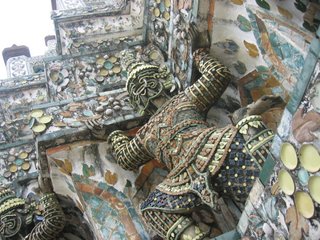

There are also four smaller towers and different temples all around with various Buddha, demon and warrior images.

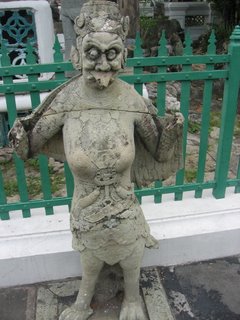


Wat Po is Bangkok's oldest (built in the 16th Century) and Thailand's largest wat.
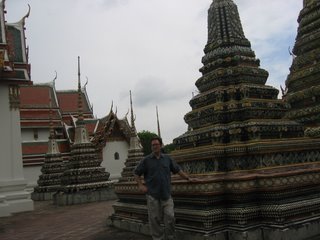



It is also known as the Temple of the Reclining Buddha.

The main feature here is the 151-foot (made of plaster and covered with gold leaf) Buddha featured in the position required to pass into nirvana.

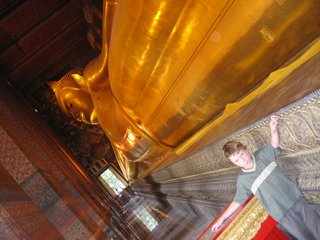
The soles of his feet are covered with mother of pearl and feature the 108 different characteristics of Buddha).
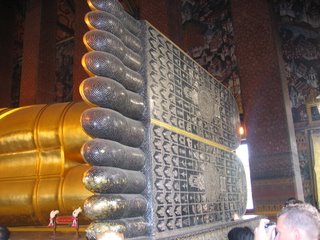
I found this interesting that this is the case, because supposedly Buddhists consider the feet the lowest part of the body (well they are) and it is considered offensive to point your feet at someone or even a Buddhist image. For this reason, I have had to adopt a whole new philosophy of posture here in Bangkok. No more lounging around on the couch with my feet on the coffee table if anyone else is around.
Wat Po is also famous as the home of Thailand's first public university and a place where one can learn (and receive) the traditional Thai massage.
Wat Phra Kaew is part of Bangkok's Grand Palace and the home of the country's most famous Buddha statue (the Emerald Buddha). This important statue has a long and interesting history that is tied to the royal family (it once resided in Wat Arun). I won't get into it all here, but if you google Wat Phra Kaew (or Temple of the Emerald Buddha) I'm sure you can learn all about it. Photos of the statue are not allowed, but I got plenty of shots of the impressive exterior.

I found it to be an architectural wonder and was impressed by all the gleaming gold towers and beautiful details. It is definately a sight to behold and is probably my favorite site in Bangkok (so far).



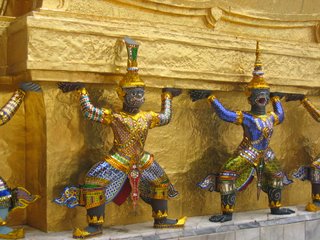


It should be noted that since wats are places of worship, adults (especially foreigners) are required to dress appropriately. This means no shorts, no sleeveless shirts and no sandals. If you show up underdressed, they will make you rent the proper clothes or just turn you away. Also, a wat is a great place to spot a monk, but you are not supposed to take their picture without their permission.
That concludes this edition of "Houses of the Holy." Look for the next installment after I visit a few more wats.

4 comments:
Wat a blast!
OMG...I'm turning into Les.
Sorry, above comment is mine...
I clicked too soon!
Wats d matter?
OK...enough of the culture! Let's see some of the seedy nightlife!
Post a Comment